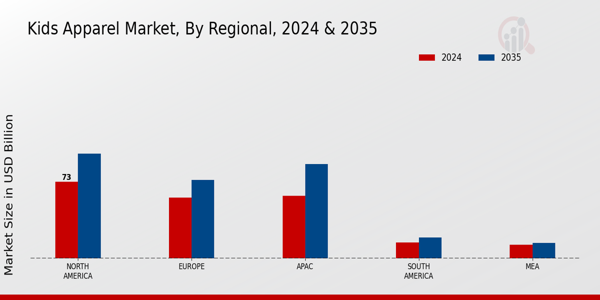Market Trends
Key Emerging Trends in the Kids Apparel Market
The kids' apparel market is characterized by dynamic trends that reflect the ever-evolving preferences of consumers and changing societal norms. Parents and caregivers are becoming more conscious of the environmental impact of clothing production, leading to a demand for eco-friendly and ethically produced kids' apparel. Brands are responding by incorporating sustainable materials, ethical manufacturing processes, and transparent supply chains, aligning with the values of environmentally conscious consumers and driving a shift towards more sustainable choices in children's clothing. Gender-neutral and inclusive designs are a significant trend in the kids' apparel market. There is a growing awareness of the need for clothing that challenges traditional gender stereotypes and offers diverse and inclusive options for children. Brands are introducing collections with gender-neutral colors, designs, and themes, providing parents and caregivers with choices that reflect a more progressive and inclusive approach to children's fashion. This trend is reshaping the landscape of kids' apparel, fostering creativity and self-expression while breaking away from traditional gender norms. Customization and personalization have become key trends in the kids' apparel market, driven by the desire for unique and individualized clothing options. Parents seek outfits that allow their children to express their personalities and interests. Brands offer customizable features such as monogramming, patches, and personalized prints, allowing parents to create bespoke clothing for their kids. This trend satisfies the demand for uniqueness and enhances the emotional connection between consumers and the brands they choose for their children. With the influence of social media and the rise of "influencers," fashion-forward parents are increasingly turning to trendy and stylish kids' apparel. Children's fashion is no longer just about functionality but also about making a fashion statement. Influenced by celebrity kids and social media influencers, parents are seeking clothing that reflects the latest trends and styles for their little ones. As a result, brands are incorporating runway-inspired designs and fashionable elements into their kids' collections, contributing to the overall trend of elevating kids' fashion aesthetics.

















Leave a Comment